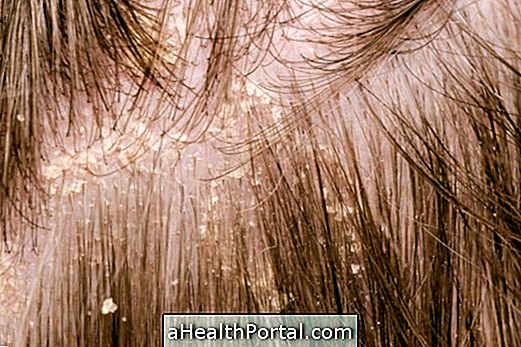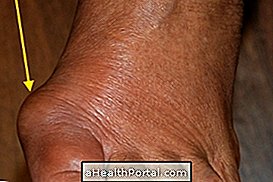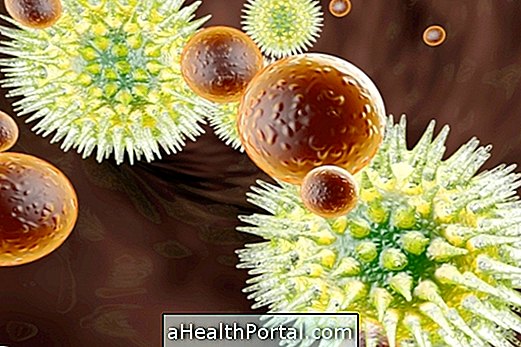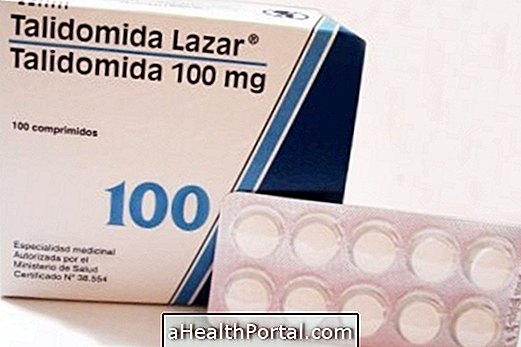Scalp itching can be caused by factors such as fungal infections, seborrheic dermatitis, lice or allergies, and may cause other symptoms such as redness, tenderness, peeling or irritation depending on the cause of the problem. Also know what the main causes of head injury are.
To identify the cause it is important to go to the dermatologist so that tests can be performed in order to close the diagnosis and start the treatment. The main causes of itchy scalp are:
1. Seborrheic dermatitis

Seborrheic dermatitis, commonly called dandruff, is a skin disorder that causes itching, peeling, and the appearance of red spots on the skin, a common problem in the scalp.
This disease is usually caused by fungi, due to weakening of the immune system or stress and in some cases may not have a cure and so it often occurs several times throughout life. However, the symptoms can be controlled with the use of some remedies or shampoos indicated by the dermatologist. Learn more about seborrheic dermatitis.
How to treat
The treatment can be done with anti-dandruff shampoos, which usually contain antifungals, and ingredients that exfoliate the skin and accelerate cell renewal, such as Nizoral, Medicasp, Lonil T or Caspacil, for example. In cases where the shampoo is not sufficient to treat the problem, it may be necessary to resort to formulations with corticosteroids, such as the Betnovate capillary or the Diprosalic solution.
In addition, for the treatment to be more successful, it is very important to always keep the hair and scalp thoroughly clean and dry, remove shampoo and conditioner after bathing, do not use too hot water, decrease alcohol intake and greasy foods and avoid stressful situations. See more about treatment for seborrheic dermatitis.
2. Scalp ringworm

Mycosis of the scalp, also known as Tinea capitis, is a fungal infection that can cause severe itching, dandruff and yellow crusts on the head, and hair loss in some regions. In addition to these symptoms, some people may still have sore throats in the neck due to the immune system's response to the infection. Find out more about ringworm in the scalp.
As this type of ringworm is caused by fungi, it can easily pick up from person to person, so to avoid transmission should not be shared objects such as combs, towels or hats with people who have this disease. Know the forms of transmission of mycosis.
How to treat
Treatment consists of administering antifungal medicines like Terbinafine or Griseofulvin and using shampoos that also contain antifungals such as Nizoral, Caspacil or Teuto Ketoconazole, for example.
Pediculosis

Pediculosis is characterized by an itchy infestation that causes severe itching and usually occurs in school-age children, and easily passes from person to person through direct contact with hair or objects such as combs, hats or pillows. Learn how to identify pediculosis.
How to treat
To treat this problem you should use a treatment shampoo such as the Paranix, Sanasar or Pedider and pass a thin comb frequently.
After doing the lice elimination treatment, it is advisable to use a repellent daily that will prevent a new infestation. In addition, pillows, sheets and infected clothing should be washed at a temperature above 60 ° C, or seal these objects in a plastic bag for about 15 days, choking the lice. Check out some tips for getting rid of lice.
4. Allergy on the scalp

An allergy to the scalp can be caused by cosmetic, chemical or even sun exposure or the use of hair paints, which can cause intense itching, redness or tenderness in this region. Learn all about hair dyeing.
How to treat
To treat this problem, the ideal is to go to the dermatologist to make sure that it is an allergy that causes the itching and identify its cause.
Generally, the treatment consists in the application of steroid-containing products in its composition as hydrocortisone or betamethasone, in the administration of systemic antihistaminic remedies such as cetirizine, desloratadine or ebastine, for example, or the application of calamine or calming creams or ointments slug Find out what the slug is for and how to use it.






















